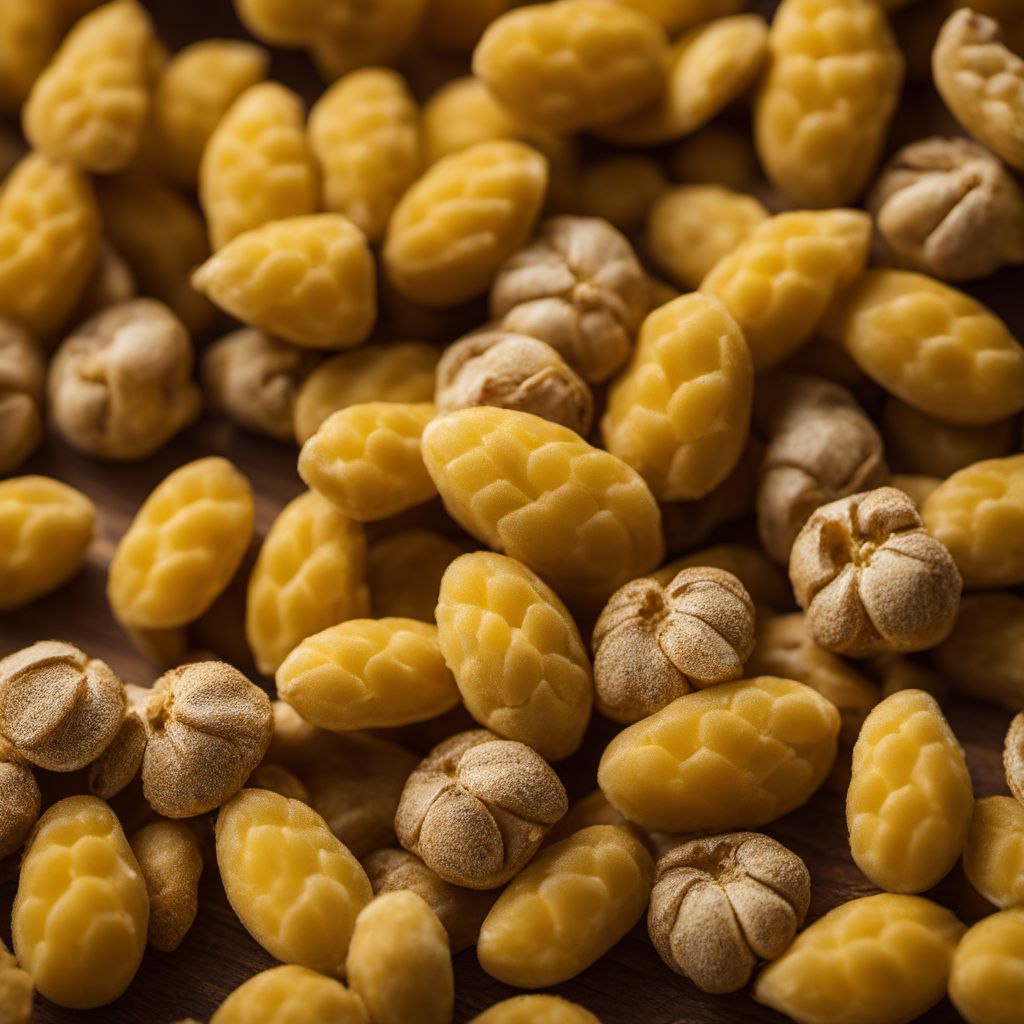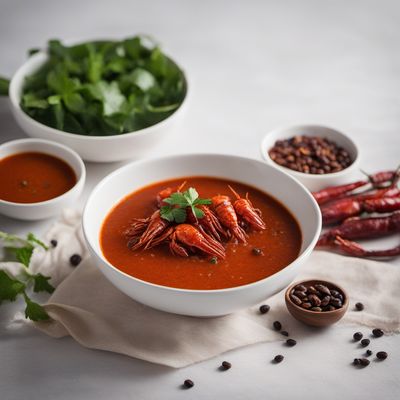
Ingredient
Yellow lupin (dry)
The Protein Powerhouse
Yellow lupin is a small, round legume with a vibrant yellow color and a firm texture. It has a slightly nutty and earthy flavor, with a hint of sweetness. When cooked, yellow lupin becomes tender and creamy, making it a great addition to soups, stews, and salads.
Origins and history
Yellow lupin is native to the Mediterranean region and has been cultivated for thousands of years. It was traditionally used as animal feed but has gained popularity as a human food source due to its high protein content and nutritional benefits.
Nutritional information
Yellow lupin is a nutritional powerhouse, packed with protein, fiber, and essential minerals like iron, magnesium, and phosphorus. It is also low in fat and cholesterol-free. Additionally, yellow lupin is a good source of antioxidants, which help protect the body against oxidative stress and inflammation.
Allergens
Yellow lupin may cause allergic reactions in individuals who are sensitive to legumes. It is important to exercise caution and consult with a healthcare professional if you have any known allergies or sensitivities.
How to select
When selecting yellow lupin, look for dry lupin beans that are uniform in size and free from mold or insect damage. Avoid beans that are discolored or have a musty smell. If purchasing pre-packaged lupin beans, check the expiration date to ensure freshness.
Storage recommendations
To maintain the freshness of yellow lupin, store the dry beans in an airtight container in a cool, dry place. They can also be stored in the refrigerator or freezer for extended shelf life. Cooked yellow lupin should be stored in the refrigerator and consumed within a few days.
How to produce
Yellow lupin can be grown in home gardens or small-scale farms. It requires well-draining soil and full sun. The plants should be watered regularly, especially during dry periods. Harvest the lupin pods when they turn yellow and dry them thoroughly before removing the beans.
Preparation tips
Yellow lupin can be cooked and used in a variety of dishes, including soups, stews, salads, and grain bowls. It can also be ground into flour and used as a gluten-free alternative in baking. Additionally, yellow lupin can be sprouted and used in salads or as a garnish.
Culinary uses
Yellow lupin is commonly used in Mediterranean and Middle Eastern cuisines. It is often incorporated into dishes like hummus, falafel, and lupin bean salads.
Availability
Yellow lupin is commonly cultivated in the Mediterranean region, including countries like Italy, Spain, and Greece.
More ingredients from this category
Recipes using Yellow lupin (dry) » Browse all

Spicy Nigerian Fish Stew
Fiery Fish Delight: A Taste of Nigeria's Spicy Stew

Garden Egg Stew
Savory Delight: Nigerian Garden Egg Stew

Congolese-style Grilled Skewers
Savory Grilled Delights: Congolese-style Skewers

Gbegiri Soup
Velvety Nigerian Gbegiri Delight

Afang Soup with a Twist
Savory Delight: Afang Soup with a Modern Twist

Pèpè Soup with a Twist
Spicy and Flavorful Pèpè Soup Infused with Exotic Ingredients

Dongo-dongo Stew
Savory Delight: Dongo-dongo Stew - A Taste of Nigerian Cuisine

Costa Rican Crawfish Boudin
Savory Costa Rican Crawfish Delight

Peppered Shrimps with a Nigerian Twist
Spicy Delight: Nigerian Peppered Shrimps

Crab Delight: A Sumptuous Fusion of Seafood
Oceanic Delights: Crab Stuffed with Crayfish

Nkwobi - Spicy Nigerian Cow Foot Stew
Fiery Delight: Nkwobi - A Spicy Twist to Nigerian Cuisine

Mbanga Soup with Smoked Fish and Egusi
Savory Delight: Smoky Mbanga Soup with a Twist

